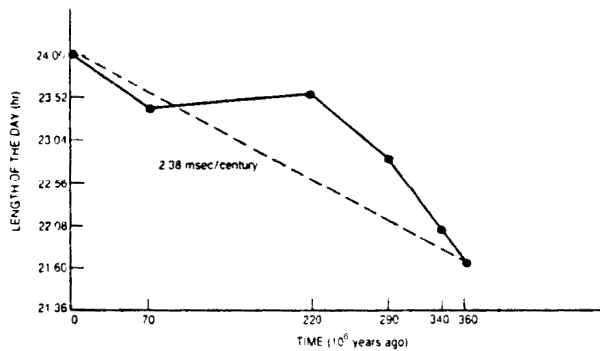 |
Science Frontiers ONLINE No. 12: Fall 1980 |
|
|
Gravity down, mass up
The variation of the gravitational constant, G, with time would not be considered seriously were it not for the surprising coincidence of two enormous dimensionless numbers:
(1) The ratio of the electrical to gravitational force between the electron and the proton in a hydrogen atom; and (2) The ratio of the age of the universe and the atomic unit of time.
If these two ratios are truly equal, then G must decrease with time.
Beyond the unstable feeling one gets, there is nothing in physics or cosmology to discourage a belief in time-varying gravity. Indeed, some as-tronomical data weakly support the idea. It is geophysics, though, where one finds strong evidence. Measurements of the decreasing length of the day and the expansion of the earth give about the same value for a decreasing G -- after other contributing factors have been eliminated.
An interesting consequence of all this is that astrophysical theory seems to require that a decreasing G be balanced by increasing mass. Experiments are now underway to detect the continual creation of mass in terrestrial objects.
(Wesson, Paul S.; "Does Gravity Change with Time?" Physics Today, 33:32, July 1980.)
